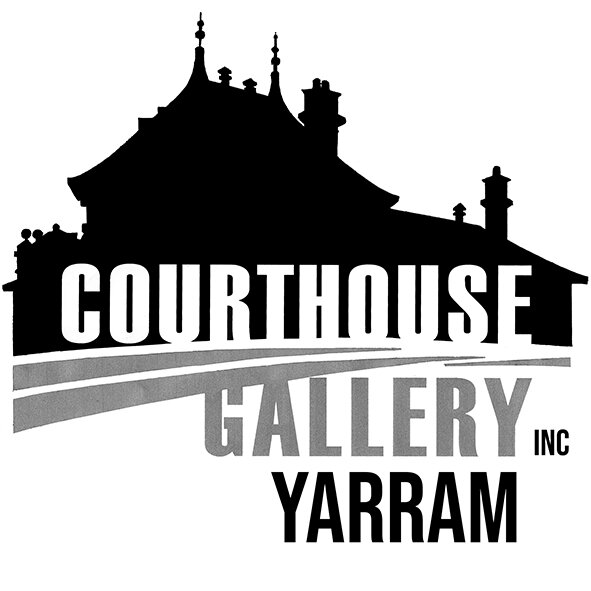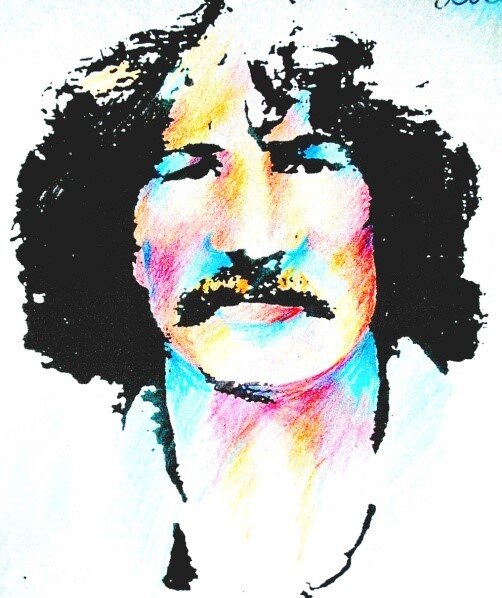John Rojo Fluidity
This exhibition is the culmination of fifty years of artistic endeavour. Throughout this period, I have worked as a graphic designer, teacher, potter, painter, lecturer and builder.
Fluidity is about the movement of flames across the surface of my pots in my uniquely designed wood fired kilns. It is about the flow of water in mountain streams and turbulent oceans. The movement of wind through our magnificent eucalypt forests and the patterns that are created as the bark peals and makes alluring formations on their trunks.
I love the way the light dances on the surface of the water especially when the sun rises and sets. I have a deep respect for our indigenous people and their culture and their respect for the environment and sacred sites but I despair at the devastation caused by progress and greed.
As a potter I enjoy the fluidity of the clay and the ability to create beautiful forms from this plastic, sensuous material. It is a journey of discovery especially using local clays and materials to create timeless artifacts. The process of making an object from a fluid material, applying a liquid glaze then firing these works in a wood fired kiln for 45 hours is still fascinating to me. The magic of the results can be both exhilarating and disappointing.
As a painter, I love the myriad of subtle colour variations as you mix them on your palette. It is exciting to see the movement created when using complementary colours on a two-dimensional surface. I enjoy the dappled light and the contre-jour lighting created by the sun as it dances through the leaves and branches.
I am in awe of the power of nature and its ability to regenerate from the forces of fire, wind, and flood. Some of my latest works are inspired by the bushfires that ravaged our beautiful flora and fauna in 2019 and 2020.
I often look out to the Strezlecki mountains and imagine what our magic country would have looked like 150 years ago when the yellow stringy barks and mountain ash ruled the skyline. The third planting of pinus radiata in this beautiful area will so diminish the fragile soil that the inevitable conclusion will be a desert landscape.
John Rojo
Wood Fired Ceramics
In 1982, I moved to the Tarra Valley in South Gippsland to build a house, studio and gallery. My main passion at the time was wood fired pottery. I was fascinated with the natural colours and unpredictability of the process. This lifestyle means long hours of work, many failures and a life of poverty. Having a young family meant I had to supplement my income working as a teacher.
Wood fired pottery is ancient and seldom practiced art form. The beauty of wood firing is that nature has its way with manmade articles and it is this combination that makes each one of these works totally individual and impossible to reproduce. All works have been fired in a tunnel style wood fired kiln and a down draught wood kiln. The use of terrasigilata sourced from local clays and materials and traditional Japanese glazes help to create highly individual pots that are unique. The use of native hardwood for firing the kiln and creating ash glazes also gives the work a special quality. Many works have been fired multiple times.
The use of seaweed and shells help to give each of these ceramic works a luminous natural beauty. These pieces have their imperfections the same as human beings who withstand the rigors of time. These pots are not always perfect, but it is these imperfections that make them individual, unique and intrinsically special.
My kilns are like a painter’s palette: they allow me to paint the surfaces of my pots with flame and colour. I love the subtle qualities of the local clays and I have experimented with many types of clay from the local area. Kiln firing can be between 30 to 100 hours.
The movement of the flames, the incredible colour variation and the unexpected results make this demanding process rewarding when all goes well. When purchasing my work you are purchasing part of me and 45 years of passion, creativity and individuality.
I am Currently lecturing in Ceramics at Federation University Gippsland

